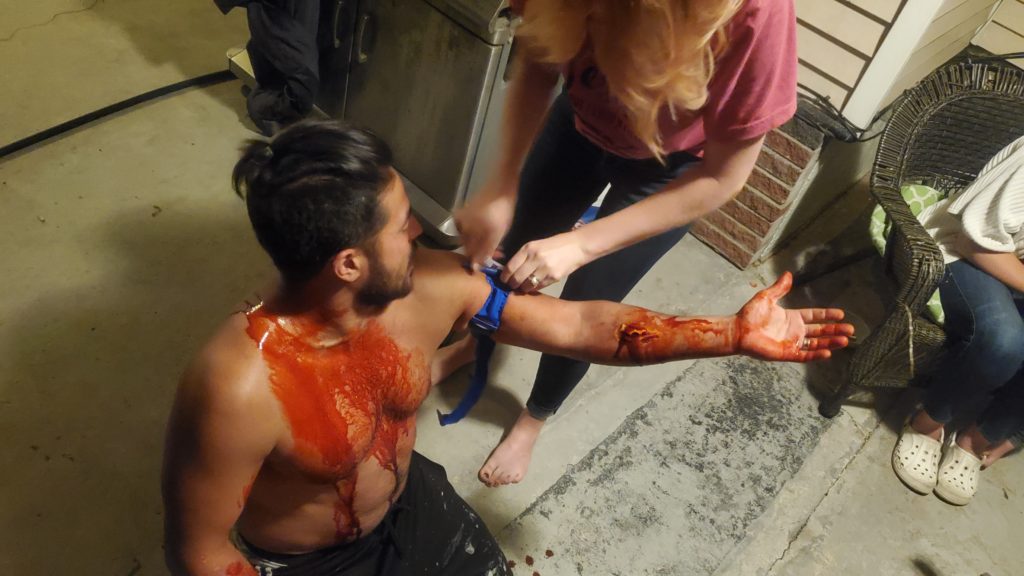^ BFG is good stuff. Thank you for posting that.

Towards the discussion of TQ placement -
^ The following public FB post on the North American Rescue (makers of the CAT) gives a bit of nuance into the "high-and-tight" versus closer-to-wound placement discussion.
Same for the following entry appearing in the Dark Angel Medical blog:
So, let’s talk a little bit about tourniquets, hemostatic agents and chest seals. Tourniquet the Limbs, Pack the Junctions, Seal the Box SIMPLICITY UNDER STRESS

darkangelmedical.com
And unlike what we previously were taught, TQs will work just fine on "two bone" compartments, such as the forearm and lower leg:
NAR - two bone compartments [
graphic images in this post]
A few other very important things for us civilians to remember include -
(1) For blast injuries, we should be careful to look further proximal ("towards the heart/trunk"). Even though the traumatic blast-induced amputation may be more distal (towards the end of the extremities: i.e. more towards the foot or hand), the blast may cause injuries "higher up." We've all seen that now iconic image of that injured man at the 2013 Boston Marathon, being pushed on a wheelchair while holding up his severed leg.... Going "high and tight" here may not only be the most expedient thing to do, but also may well save the victim's life. [
I will come back for a citation to support this assertion, if I can find it: I read it a little while ago, and can't seem to locate the source. 
]
(2) CPR is a wonderful, lifesaving technique, but if there's no blood for the heart to pump, it's a net-zero. For massive bleeds, that blood loss must be stemmed at first opportunity, and this is highlighted in the following BFG "Always Better" medical blog:
https://www.blueforcegear.com/articles/post/cpr-trauma-patients-news-post.html
(3) TCCC TQs will more than likely also work on children:
https://www.crisis-medicine.com/do-commercially-available-tourniquets-work-on-kids/ However, be prepared to improvise if it does not.
(4) Finally, for as awesome tools as the TCCC TQs are (I carry 2 at all times, and both my EDC/carry-on bag, as well as my vehicle and range-bags each have more), remember that what we civilians may see in "mass shootings" will differ from what is seen in armed conflicts:
https://pubmed.ncbi.nlm.nih.gov/26958801/ If you can, having chest seals in your EDC-IFAK is worth the money and space premiums. That said, the statistical differences in wounding should not mean that we average-Joes/Janes forego TQs in our kits: remember that massive-bleeds as a result of traumatic injuries to the extremities are often the result of motor-vehicle, industrial, and other every-day accidents or activities.

 www.blueforcegear.com
www.blueforcegear.com


 www.blueforcegear.com
www.blueforcegear.com


